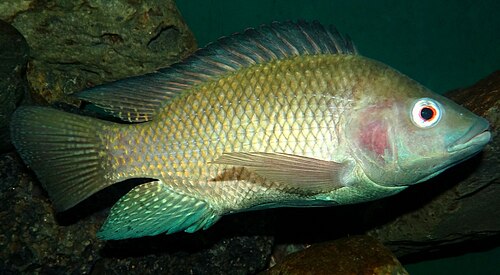Facts for Kids
Tilapia is a freshwater fish known for its mild flavor, rapid growth, and significant role in aquaculture, making it a popular choice for consumption worldwide.
Overview
Culinary Uses
Nutritional Value
Environmental Impact
Aquaculture Practices
Cultural Significance
Habitat And Distribution
Species And Classification
Conservation And Challenges

Inside this Article
United States
Mekong River
Aquaculture
Mozambique
Protein
Future
Mexico
People
Stress
Did you know?
🐟 Tilapia is often referred to as the 'Aquatic Chicken' due to its rapid growth and reproduction rates.
🌍 Tilapia is one of the most widely farmed fish globally, with significant production in countries like China and Indonesia.
🥗 Tilapia is a popular source of lean protein, low in fat and rich in essential nutrients.
💧 Tilapia can thrive in fresh and saltwater, making it a versatile species for aquaculture.
🌱 Tilapia is considered an omnivorous fish, feeding on a variety of plants and aquatic organisms.
🧪 Tilapia has a very mild flavor, which makes it a popular choice for various culinary dishes.
📈 The tilapia farming industry has rapidly grown, with sustainable practices becoming more common.
🙌 Tilapia is often recommended for people looking to adopt a healthier diet due to its nutritional benefits.
🇺🇸 In the United States, tilapia is among the most consumed fish species, often found in restaurants and grocery stores.
🎣 Tilapia can be found in both wild and farmed settings, but wild catching is less common due to overfishing concerns.
Introduction
Originating in Africa and the Middle East, tilapia are now farmed in many countries, including the United States, Thailand, and China! They are easy to raise and grow quickly, making them a popular choice for fish farms. Did you know that tilapia can breathe air? They have a special way to gulp oxygen when the water is low in it! 🌊
Culinary Uses
You can prepare it in many delicious ways! Grilled, fried, or baked, tilapia can be seasoned with spices like lemon, garlic, or herbs. 🍋
Many recipes around the world include tilapia, such as fish tacos in Mexico or sweet and spicy tilapia in Asia! It’s a versatile fish that can make dinner time exciting! 🍽
️
Nutritional Value
It’s full of protein, which helps our bodies grow and repair. A 3-ounce serving of cooked tilapia has around 23 grams of protein and only about 110 calories! 😋
It also contains important nutrients, like omega-3 fatty acids, which are good for our hearts and brains! However, it’s important to eat tilapia in moderation since excessive farming can lead to unhealthy practices, like using antibiotics! 🌱
Environmental Impact
It helps reduce overfishing in the wild. However, poor farming practices can release pollutants into rivers and lakes, harming local wildlife. 🚫
Good tilapia farms use methods to keep the water clean and create a safe home for both fish and plants. 🌊
Learning how to grow fish sustainably is important to keep our planet healthy for future generations! 🌍
Aquaculture Practices
Farmers build special ponds or tanks to raise them. Did you know that tilapia can grow from a baby fish to an adult in just six months? That’s super quick! In farms, tilapia are usually fed a diet made from plant-based foods, like corn and soy meal, to help them grow strong! 🌽🐟 They are often raised in a way that helps protect the environment, making them a great choice for sustainable seafood! 🌎
Cultural Significance
Today, many people in Africa, Asia, and the Americas consider tilapia a staple food. Festivals and celebrations often feature tilapia dishes, bringing families and communities together. 🎉
In some countries, tilapia is a sign of good luck and prosperity! 🍀
Special recipes and cooking traditions are passed down through generations, making it a beloved dish worldwide! 🌏
Habitat And Distribution
️ They are commonly found in lakes, rivers, and ponds. You can discover tilapia in places like Lake Victoria in Africa or the Mekong River in Asia! They prefer shallow areas where there are plenty of plants for hiding and breeding. Did you know that tilapia can survive in both fresh and salty water? This unique ability helps them to live in many different environments! 🌾
Species And Classification
Nile tilapia is the most commonly farmed species, known for its rapid growth and adaptability! Tilapia can grow to be about 1-2 feet long, depending on the species. In the wild, they are often found in rivers and lakes, where they use their sharp dorsal fins to defend themselves. 🌊🌱
Conservation And Challenges
One issue is the spread of diseases that can affect fish health. Farmers must be careful to maintain clean water and healthy fish to avoid problems. 🦠
Overcrowding in fish farms can also lead to stress for the fish. Conservation efforts are necessary to ensure tilapia farming is done sustainably. It’s essential to respect natural habitats while providing quality food to the world. 🌎
Working together can help preserve tilapia for the future! 🌱

